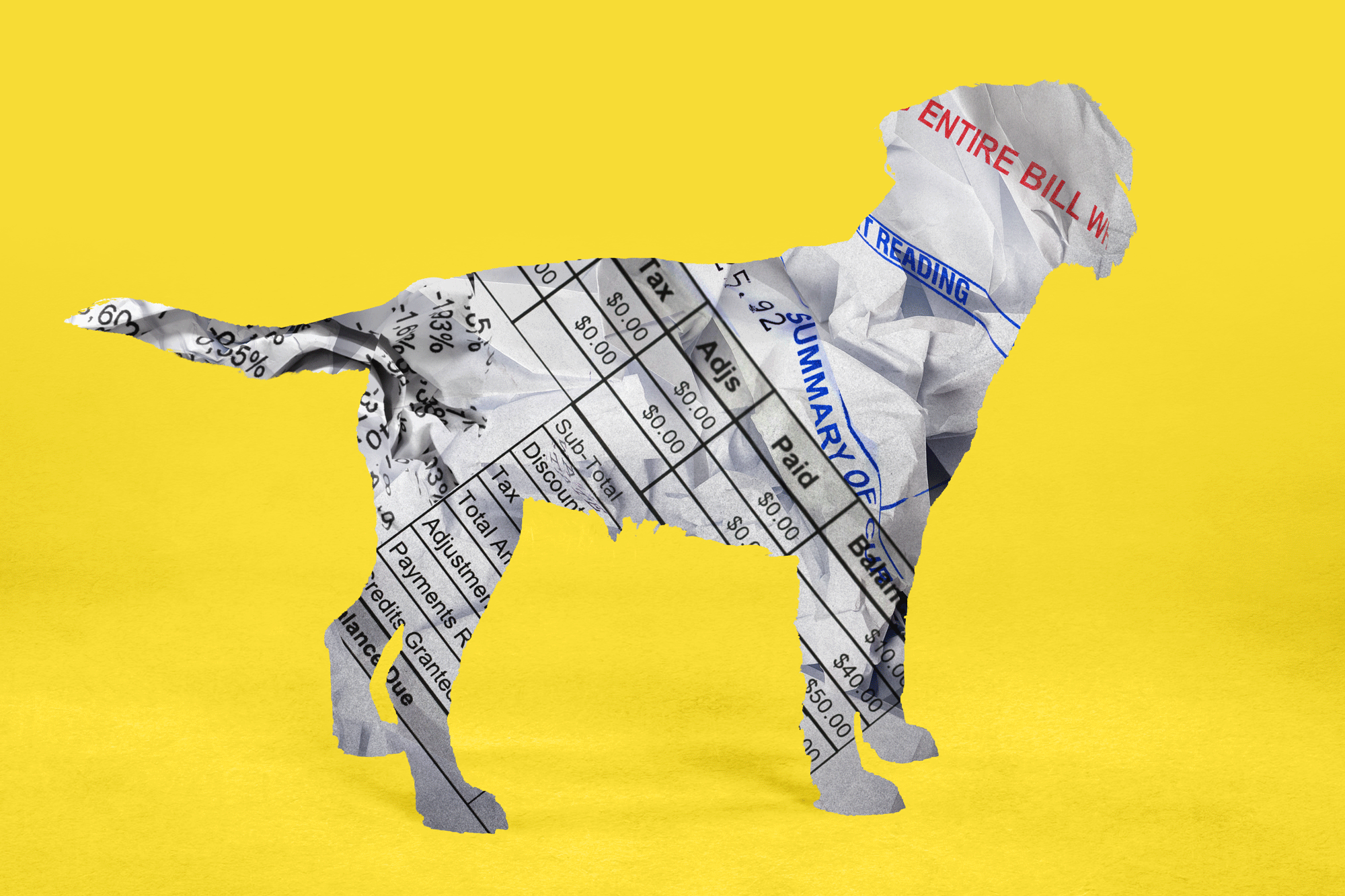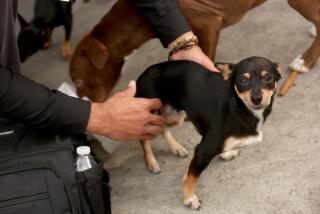Seeing Pets Eye to Eye : Vet Team in La Habra Specializes in Ophthalmic Work
- Share via
LA HABRA — Peering into her aged patient’s painfully red eye using the latest high-tech microscopic instruments, Dr. Elizabeth Chambers could spot the tiny fat and calcium deposits that were causing the cornea to deteriorate.
Her dietary recommendation: skinless chicken and low-fat dog biscuits for the 16-year-old Chihuahua mix.
Chambers and her husband, Dr. Douglas Slatter, operate the Animal Eye Clinic, one of about five veterinary eye centers in Southern California. Another is in Garden Grove.
The partners, who see 2,000 new patients and perform 500 surgeries annually, are two of only 150 veterinary ophthalmologists in the country. And Slatter is one of only four veterinarians in the country certified to do both general and ophthalmic surgery.
“Being an ophthalmologist is a lot like being a detective,” said Slatter, who took over the clinic with Chambers in 1985 after the retirement of its founder, Dr. Ralph Vierheller. “It requires that you look at all of the evidence to solve the problem and, in most cases, we get a good turnout.”
Slatter, a native of Australia, said animal ophthalmologists are needed because few general veterinarians have extensively studied the eye and its functions.
“Some may have spent two weeks studying the eye in veterinary school, some may have spent zero time, depending on the school they went to,” Slatter said. “It’s like a family doctor--if there is a major problem with the eye, he refers you to an ophthalmologist.”
The patients are referred to the clinic from as far away as Barstow and the San Fernando Valley. Slatter and Chambers are in such demand that they offer periodic clinics in Reno, Bakersfield, Riverside and West Los Angeles, but most of their surgeries are performed in La Habra because that is where they have their specially equipped operating room.
There is an electronic microscope, which allows Chambers and Slatter to magnify the eye’s tiny parts up to 40 times. A special stethoscope is placed in the animal’s throat and projects the sound of the heartbeat through speakers so the doctors can monitor it through sound.
And an ultrasound machine obliterates cataracts, allowing them to be removed with suction rather than cut from the eye.
“Most of the equipment is the same as a human eye clinic would have, with some modifications,” said Chambers, a native of Southern California. “For example, the curvature of the surgical scissors is different for each animal. The curvature on a horse’s eye is different than a cat’s.”
On one recent day, Joyce Perlstein began the 60-mile trip from Encino at 5:40 a.m. to make sure Kahlua, her 9-month-old toy poodle, would arrive on time for her 8 a.m. surgery to remove some ingrown eyelashes. The lashes were scratching the surfaces of Kahlua’s eyes, causing her pain and making her tear excessively.
“My veterinarian said this was the only place to take her, and I’m real happy I did,” said Perlstein, a homemaker. She clapped her hands in glee when Kahlua was brought to her after surgery. “Distance was not an object.”
That afternoon, the clinic was a swirl of people and their Shih Tzus, calicoes and hounds, each waiting for a 15- or 30-minute examination. About 70% of the animals seen at the clinic are dogs. The rest are mostly cats, with an occasional rabbit or guinea pig thrown into the mix.
If distance is not an object for some clients, neither is cost. A simple examination at the clinic runs at least $52.50 and surgery can cost more than $1,500.
Patty Lord, a Long Beach bookkeeper, says she has spent several thousand dollars on Maggie, her 8-year-old basset hound, who has gone blind because of glaucoma and other problems. As Chambers examined the dog--a mellow sort who navigates through smell and trial and error--Lord hugged the dog and kissed the top of her head.
“If somebody told me 10 years ago I would spend this kind of money on a dog, I would have told them they were nuts,” Lord said. “But Maggie’s well worth it.”
“They’re like your family, your best friend, and if they need help you get it for them,” explained Marilyn Myers, a retired office clerk from Sierra Madre who brought her Boston terrier into the clinic recently for a post-surgery checkup. Myers and the dog, who is also named Maggie, each wore matching sunflowers--Myers on her hat, Maggie on her harness.
Pets are susceptible to a number of eye diseases, Slatter and Chambers said, including some that are common in humans, such as cataracts and glaucoma. Cocker spaniels, arctic breeds such as huskies, and dogs with protruding eyes, such as Shih Tzus, poodles and some terrier breeds, are the most vulnerable, they said.
Cataracts create a clouding of the eye’s lens. Like humans, animals can have their cataracts removed and their sight restored, at least partially.
But glaucoma--an increase in the eye’s internal pressure--is devastating to a pet’s eyes, causing irreversible blindness without warning within two days if not treated, rather than the months or years the disease takes to blind a human eye, Slatter and Chambers said.
“If in the morning a dog has a red eye and it’s still red that night, the dog needs to be checked because that could be a warning sign of glaucoma,” Chambers said.
Even if it’s too late to save the eye’s function, the pet still needs to see an eye specialist.
“What we can do then is surgery to relieve pressure in the damaged eye and begin giving the animal medication to try and prevent glaucoma in the other eye,” Slatter said. “We’ve been fairly successful with that.”
Chambers said there are so few veterinary ophthalmologists primarily because of the cost to become one. Three years of expensive training is required on top of the seven years and thousands of dollars a veterinarian has already spent in school. Add on the $100,000 or more that it takes to equip an animal eye clinic and it becomes a difficult financial proposition.
But animal ophthalmology has its rewards, she said.
“This is a wonderful field in which to work,” Chambers said. “We deal with a lot of well-educated people who are devoted to their pets.”
More to Read
Sign up for Essential California
The most important California stories and recommendations in your inbox every morning.
You may occasionally receive promotional content from the Los Angeles Times.













